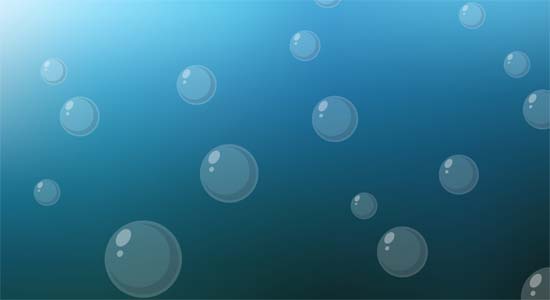Amid a tumultuous legal and diplomatic atmosphere in Southeast Asia over the disputed areas in the West Philippine Sea, experts from the scientific community have proposed the establishment of a marine park. In setting up a marine protected area, our region could halt the devastating environmental degradation and help claimant-States sustainably benefit from the fishery resources in the contested waters.

The long-standing disputes between six countries bordering the body of water grew in urgency when China took aggressive steps to enforce its infamous and illegal nine-dash line, which covers more than 80% of the sea. Provocative Chinese actuations to enforce their claim and defend Chinese fishermen’s illegal activities, notably at Scarborough Shoal, forced the Philippine government in 2013 to invoke the provisions of UNCLOS and initiate a case against China before a neutral court of arbitration.
The effects of China’s actions have not only been diplomatic or military in nature. One cause of action in filing the case was the extensive environmental damage caused by Chinese government agents burying reefs under concrete to build “artificial islands” and by Chinese fishermen using highly destructive methods. These steps threaten the food and livelihood sources of all coastal nations. Thankfully, the Arbitral Tribunal ruled in favor of the Philippines on these points.
At present, our country is exploring ways by which it can work together with fellow claimants to improve relations. As it does so, our leaders should consider and support practical measures that can simultaneously address the environmental damage and build greater trust among all stakeholders in the region.
CREATING A MARINE PARK OR A MARINE PROTECTED AREA
A marine protected area (MPA) is defined by the US National Oceanic and Atmospheric Administration (NOAA) as an area of the oceans or other bodies of water that are protected for conservation purposes. This concept is well-established under Philippine laws; today, MPAs are managed under the framework of the National Integrated Protected Areas System (NIPAS) Act.
As defined by NOAA, the main objective of establishing an MPA is to protect biodiversity and the integrity of the marine ecosystem in the area. The West Philippine Sea is part of the Coral Triangle Region, the global center for marine biodiversity. If the habitat, spawning, and feeding grounds of these megadiverse species are severely disrupted, humanity risks losing part of its heritage, a wealth of scientific discoveries, and, most urgently, an important source of food.
In the case of the island-building activities in the West Philippine Sea, creating a marine park or sanctuary can allow what is left of the coral reefs and the marine species to slowly recuperate and, for the endangered species there, have a fighting chance against extinction.
Establishing an MPA not only works toward ecological preservation but, more importantly, ensures that people can sustainably benefit from the fish and other aquatic resources in the area. The South China Sea is notable for being the “nursery” of fisheries, where fish that feed the world reproduce. By establishing a marine-protected area over this nursery, the overall stocks of fish beyond the MPA’s limits will also increase.
The suggestion for the establishment of an MPA would recognize the resource-rich nature of the disputed areas and consequently better safeguard the survival and livelihood needs of people from coastal communities for these resources.
LEVERAGING PHILIPPINE MARINE AND COASTAL GOVERNANCE; NO STARTING FROM SCRATCH
The foundation for maritime affairs governance began with the establishment of the Cabinet Committee on the Treaty of the Law of the Sea by then President Ferdinand E. Marcos in 1981.When President Corazon Aquino came into power, the Committee was tasked to implement UNCLOS and harmonize domestic laws and regulations pertaining to ocean affairs.
President Fidel V. Ramos transformed the Cabinet Committee into the Cabinet Committee on Maritime and Ocean Affairs (CABCOM-MOA). The agency’s jurisdiction expanded to include “other related marine-concerns” and institutionalized the need to develop a marine research community involving both public and private institutions. Thereafter, President Joseph E. Estrada restructured CABCOM-MOA in 1999 to create the Technical Committee to be the implementing arm and the Marine and Ocean Affairs Center (MOAC) to serve as the secretariat.
In 2001, President Gloria Macapagal-Arroyo first abolished CABCOM-MOA and devolved its functions to MOAC. She later reconstituted MOAC into the Commission on Maritime and Ocean Affairs (CMOA), thus making the governance body a separate and independent agency once again. This agency was mandated to have “overall jurisdiction and direction over policy-formulation, implementation and coordination with other departments and experts, both foreign as well as local, on maritime issues.”
President Benigno S. C. Aquino III, however, replaced CMOA with a new governing body called the National Coast Watch Council (NCWC). In light of the Philippines’ maritime security challenges, the NCWC would be the “central inter-agency mechanism for a coordinated and coherent approach on maritime issues and maritime security.” The NCWC operates under the National Coast Watch System, headed by the Executive Secretary. The National Coast Watch Center, led by the Philippine Coast Guard, implements the system.
Thus, while a West Philippine Sea marine park may be a new idea, the Philippines has the advantage of having a legal and institutional framework that the country can build on not only in the service of its environmental goals, but its diplomatic ones too.
Atty. Lysander Castillo is an Environment Fellow at the Stratbase-ADR Institute and the Secretary-General of Philippine Business for Environmental Stewardship (PBEST)
Originally posted on Business World
